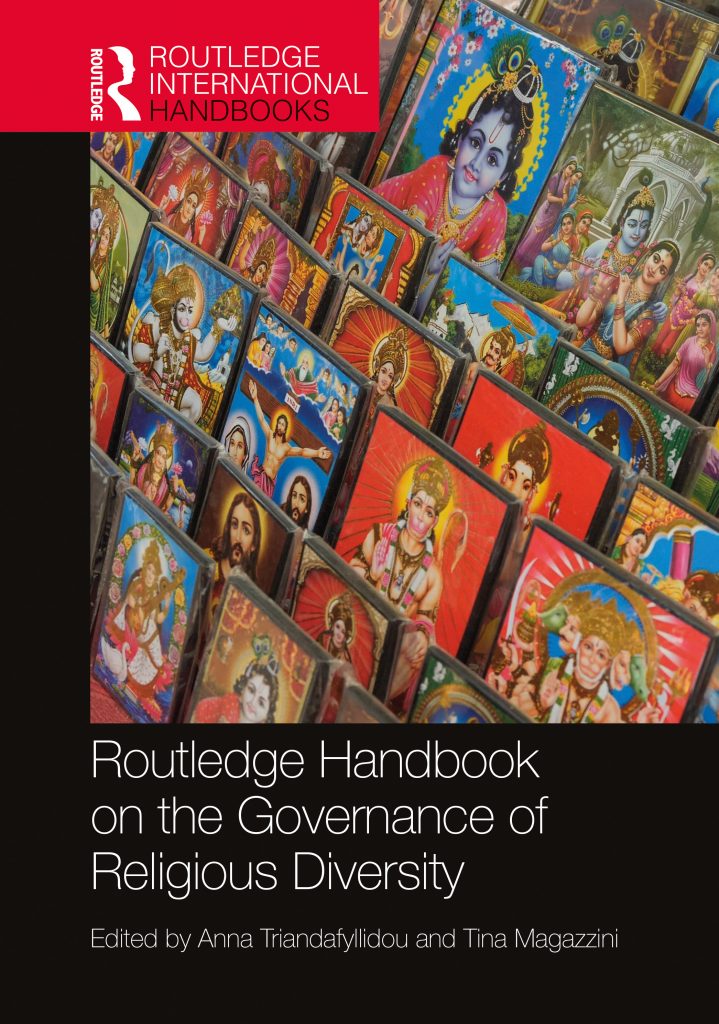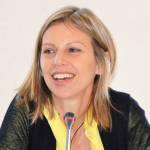By Tina Magazzini and Anna Triandafyllidou ~
In January 2021 the first book-length publication of a Horizon-2020, EU-funded, but international research project that covers 23 countries over four continents, was released. Looking at how religious diversity is managed, governed, and accommodated in a broad variety of settings, the volume provides both an overview of how different states have historically navigated the entanglements between national and religious identities, as well as an assessment of current practices, norms, and institutions.
Why another handbook on religious diversity?
With increasing restrictions on religion around the world and the resurfacing of nationalisms that tend to see religious diversity as a problem rather than as a normal feature of an increasingly interconnected world, the Routledge Handbook on the Governance of Religious Diversity stems from the conviction that a broad, comparative look at different models of state-religious relations can provide helpful insights into how religious minorities and majorities can have their needs and claims guaranteed while safeguarding peaceful coexistence.
 Different traditions are positioned across a continuum between freedom of religion and freedom from religion with most countries located somewhere in-between the extreme ideal types. How can however these two rights be both protected, and how does the trade-off between the two play out in different contexts? Also, how much can religion and national identity overlap or conflict, without this relationship becoming a threat to social cohesion in plural societies? What can we learn from comparing state-religion models in the Middle East, Europe, Southeast Asia with a case like Australia?
Different traditions are positioned across a continuum between freedom of religion and freedom from religion with most countries located somewhere in-between the extreme ideal types. How can however these two rights be both protected, and how does the trade-off between the two play out in different contexts? Also, how much can religion and national identity overlap or conflict, without this relationship becoming a threat to social cohesion in plural societies? What can we learn from comparing state-religion models in the Middle East, Europe, Southeast Asia with a case like Australia?
An important aspect is that while all chapters follow a similar structure in order to make them more easily comparable, there was no overarching theory or ‘preferred model’ that the volume set out to test or confirm. Rather, we privileged a dialogue or ‘multilogue’ across disciplines, geographical regions, different religious or non-religious identities, with a view to bringing together theoretical insights about state-religion relations with empirical data on cultural and religious diversity and related policies and practices.
This Handbook is neither a collection of good practices aimed at guiding policies, nor does it involve ‘ranking’ countries according to some set of ideal type. The inductive nature of the volume paints a picture that is layered, complex, and at times counter-intuitive: by looking at the countries’ demographics, the presence of strong or weak ties between the state and the dominant religion(s), and the typologies of religious governance in different societies, no clear-cut causal mechanism emerges.
It is true that on a spectrum that ranges from absolute secularism to the hegemony of religion, most European countries lean towards moderate secularism while states in Southeast Asia and the MENA region place a stronger primacy on religion. But contrary to the expectation that religious controversies might be stronger in countries with strong links between the state and religion, the data shows that even in those countries in which these linkages are quite weak and religion is mostly relegated to the private sphere (such as France), it still represents a heated and contentious issue. Modern Russia, for instance, inherited a secular society from the Soviet Union. However, the Soviet Union’s anti-religion policies provoked an opposing reaction and made it possible for religion’s revival, which consolidated the privileged position of the Russian Orthodox Church, and eventually turned towards the persecution of non-institutionalised religious groups (especially Muslims) which are seen as a threat.
Nor is the level of religious homogeneity (indicated by the presence and size of religious minorities) a good indicator of whether there is a strong identification or not between the nation and the religious majority community. In Morocco, where 99% of the population is Sunni Muslim, religion holds a hegemonic position in politics and Moroccans are identified as Muslims, simply because ‘they are Moroccans’. In Italy, where approximately 10% of the population belongs to a minority religion and twice as many identify as non-believers, the overlap between national identity and Catholicism continues to feature prominently in institutional settings regardless of the reality of diversity, as shown by a 2011 court case in which Italy argued that the crucifix in public schools did not symbolize religion, but rather ‘Italian civilization’.
Overall, what we find is that there is no straightforward nor single dimension (such as the type of religion, or the institutional setup) that can explain how religiosity is lived, expressed and regulated in different settings: while religious parties exist in Tunisia they are banned in Egypt, despite both being majority Muslim countries with strong state-religion ties and a low presence of non-believers.
In a sense, assessing the different ways in which religiosity plays out in the public and institutional space in various countries without flattening it into one dimension,in a world in which faith and belief remain one of the central pillars of societies, is a worthy endeavor in itself.
The danger that can be seen across different faiths, and different types of government, is when religion is mobilized and instrumentalized for political purposes, creatingcategories of inclusion and exclusion based of religious identity.
 Prof. Anna Triandafyllidou holds the Canada Excellence Research Chair in Migration and Integration at Ryerson University, Toronto. She was previously based at the European University Institute (EUI) where she held a Robert Schuman Chair on Cultural Pluralism in the EUI’s Global Governance Programme. She is Editor of the Journal of Immigrant and Refugee Studies.
Prof. Anna Triandafyllidou holds the Canada Excellence Research Chair in Migration and Integration at Ryerson University, Toronto. She was previously based at the European University Institute (EUI) where she held a Robert Schuman Chair on Cultural Pluralism in the EUI’s Global Governance Programme. She is Editor of the Journal of Immigrant and Refugee Studies.
 Dr. Tina Magazzini is a Research Associate at the Robert Schuman Centre for Advanced Studies of the European University Institute, in Florence, where she researches different models of religious diversity governance. She holds a PhD in Human Rights and an MA in International Relations, and prior to joining the EUI worked with different research institutes and international organizations in the US, Belgium, Hungary, Spain and Zimbabwe.
Dr. Tina Magazzini is a Research Associate at the Robert Schuman Centre for Advanced Studies of the European University Institute, in Florence, where she researches different models of religious diversity governance. She holds a PhD in Human Rights and an MA in International Relations, and prior to joining the EUI worked with different research institutes and international organizations in the US, Belgium, Hungary, Spain and Zimbabwe.